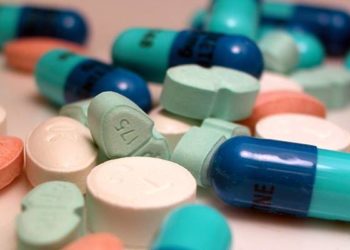High prevalence of pediatric dosing errors suggests unit standardization
1. Over 40% of studied parents demonstrated errors in pediatric liquid medication dosing when compared to the physician’s intended dose.
2. Parents using teaspoon or tablespoon measurements were significantly more likely than those using milliliter measurements (45.1% vs 31.4%) to make an error when dosing liquid medications.
Evidence Rating Level: 2 (Good)
Study Rundown: Most medications for young children are in liquid form, requiring precise weight-based dosing to ensure pediatric patient safety. Currently, no standard unit of measurement for pediatric medications prescribed in the United States exists; as such, both physicians and pharmacists often write and dispense for liquid medications in milliliters, teaspoons, and tablespoons. This study examined medication administration of parents of young children and found a high prevalence of parental dosing errors. Such errors were magnified when teaspoon and tablespoon units were used, and in populations with low health literacy. The findings also showed that parents often used nonstandard instruments to deliver medications, such as kitchen spoons as opposed to a standardized dosing cup or syringe. This study may be limited in that families enrolled in the study were asked to demonstrate how they delivered their child’s medications within 8 weeks after the end of treatment, a substantial time lag that could have impacted participant’s ability to recall accurately. Regardless, the study’s findings of pediatric dosing errors emphasize the need for regulatory efforts in standardizing liquid medication with a recommendation to prescribe and deliver in solely milliliters.
Click to read the study, published today in Pediatrics
Relevant Reading: Randomized Control Trial of a Pictogram-Based Intervention to Reduce Liquid Medication Dosing Errors and Improve Adherence Among Caregivers of Young Children
In-Depth [cross-sectional study]: This cross-sectional study enrolled 287 (child mean age = 3.5 years) English or Spanish-speaking families whose children were age < 9 years and prescribed daily liquid medications for a duration of ≤ 14 days from 1 of 2 Emergency Departments in the New York City area. Parents were contacted via phone within 2 weeks, and observed in person within 8 weeks, after the end of the treatment period. Data collection included the prescribed dose, parents’ intended dose, and actual dose demonstrated by parent at the in person visit. Error was defined as > 20% difference from prescribed or intended dose. Overall, 41.1% of parents made errors when compared to the prescribed dose, and 39.4% in comparison to the parents’ intended dose. Nonstandard instruments (ex: kitchen spoon) were used by 16.7% of parents, with the significant majority of these parents reporting dosing in teaspoon or tablespoons as opposed to milliliter dosing (30.7% vs 1.0%, P < 0.001). Parents utilizing teaspoon and tablespoon measurements were more likely to make errors compared to milliliter users; this held true for both prescribed (45.1% vs 31.4%, P = 0.04) and intended (42.5% vs 27.6%, P = 0.02) errors. Changes in units between physician ordering and pharmacy delivery occurred in 36.7% of prescriptions. Deviation errors from the prescribed dose were magnified in Spanish-speaking and low health literacy families.
More from this author: Sexting linked to sexual activity in middle school students, Possible benefit in omega-3 supplementation for extremely preterm infants, PTSD symptoms in Boston-area youth after marathon bombing, AAP issues update on iodine deficiency and associated pollutants, Duration of post-concussive symptoms identified in pediatric patients
Image: PD
©2012-2014 2minutemedicine.com. All rights reserved. No works may be reproduced without expressed written consent from 2minutemedicine.com. Disclaimer: We present factual information directly from peer reviewed medical journals. No post should be construed as medical advice and is not intended as such by the authors, editors, staff or by 2minutemedicine.com. PLEASE SEE A HEALTHCARE PROVIDER IN YOUR AREA IF YOU SEEK MEDICAL ADVICE OF ANY SORT.







![Improved hematologic cancer survival in Europe over a 15 year period [EUROCARE-5 study]](https://www.2minutemedicine.com/wp-content/uploads/2014/07/700px-Europe_polar_stereographic_Caucasus_Urals_boundary.svg_-75x75.png)

